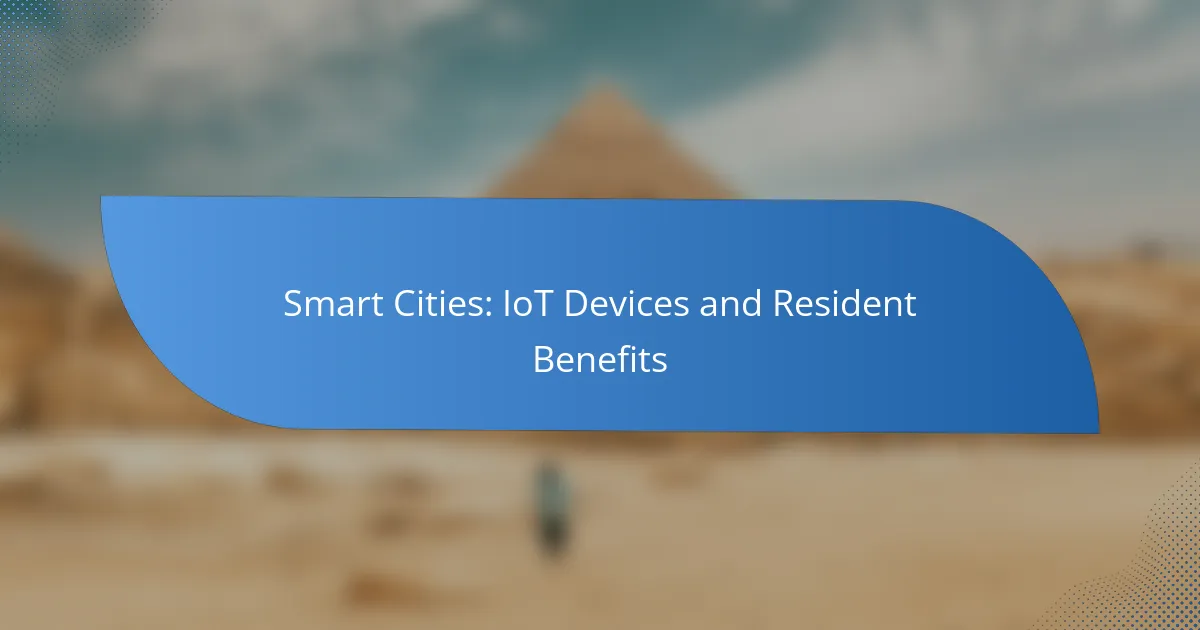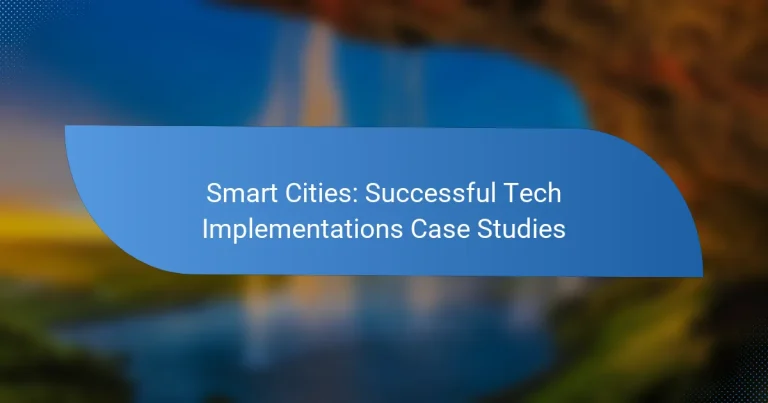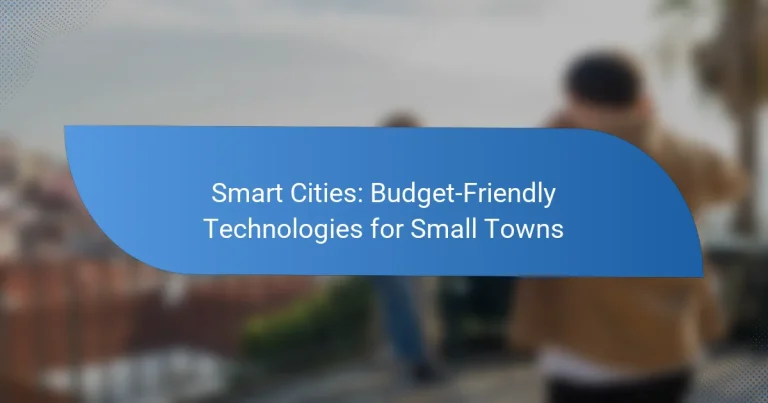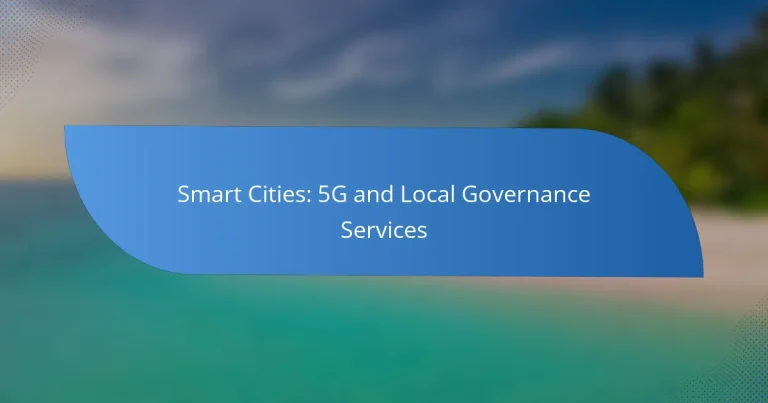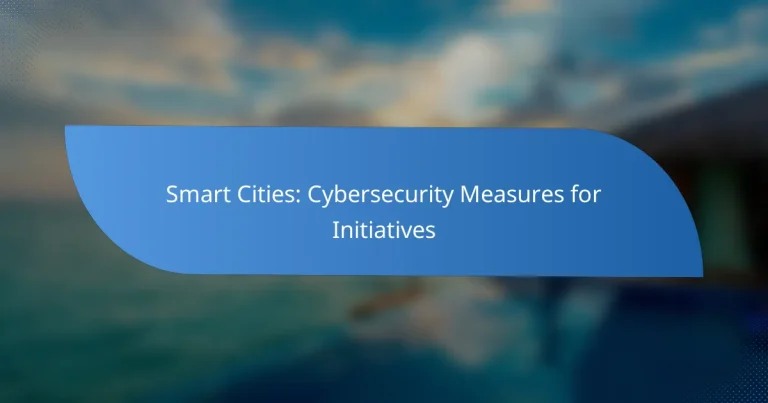Smart Cities: IoT Devices and Resident Benefits
Smart cities leverage IoT devices to transform urban living, enhancing efficiency, sustainability, and the overall quality of life for residents. By collecting and analyzing data, these interconnected devices optimize services and infrastructure, leading to smarter decision-making and resource management. As a result, residents benefit from improved services, cost savings, and a more connected community, fostering a healthier urban environment.
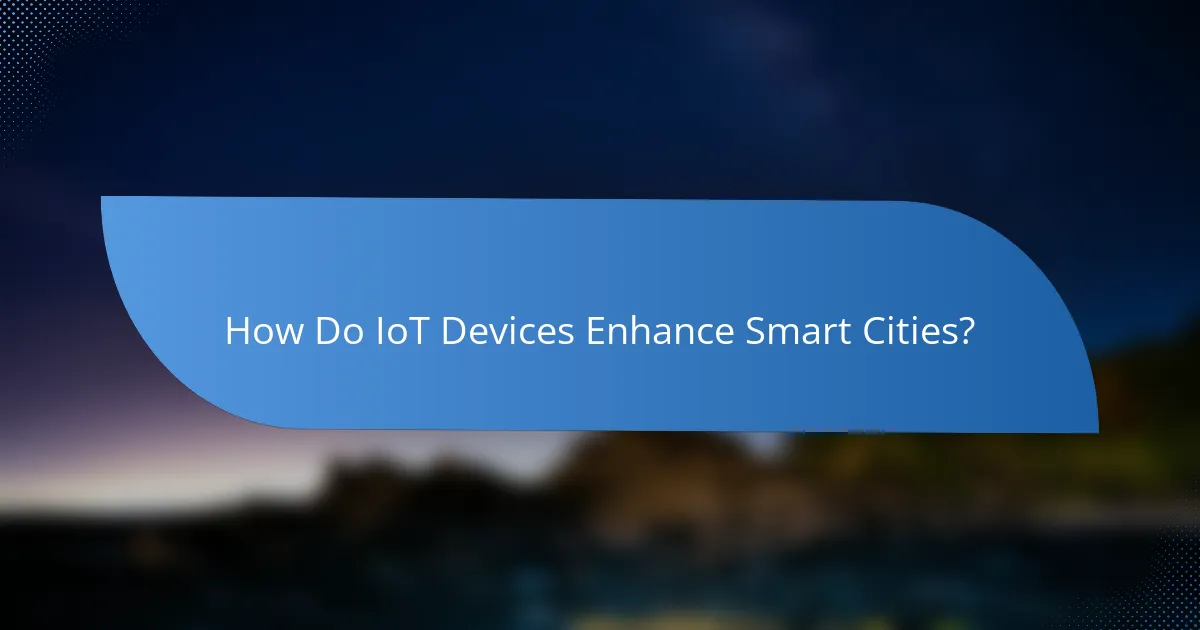
How Do IoT Devices Enhance Smart Cities?
IoT devices significantly enhance smart cities by improving efficiency, sustainability, and quality of life for residents. These interconnected devices collect and analyze data to optimize urban services and infrastructure, leading to smarter decision-making and resource management.
Improved Traffic Management
IoT devices enhance traffic management by using sensors and cameras to monitor vehicle flow and congestion in real-time. This data allows city planners to adjust traffic signals dynamically, reducing wait times and improving overall traffic efficiency.
For instance, smart traffic lights can change their timing based on current traffic conditions, leading to smoother commutes and less fuel consumption. Cities implementing these systems have reported reductions in travel times by up to 20%.
Energy Efficiency
Energy efficiency in smart cities is greatly improved through IoT-enabled smart grids and smart meters. These devices provide real-time data on energy consumption, allowing residents and businesses to adjust usage patterns and reduce waste.
For example, smart streetlights can dim or brighten based on pedestrian activity, conserving energy during low-traffic hours. Cities that adopt these technologies can achieve energy savings of 30% or more, contributing to lower utility bills and reduced carbon footprints.
Public Safety Enhancements
IoT devices bolster public safety by integrating surveillance cameras, emergency response systems, and environmental sensors. These technologies enable faster response times to incidents and provide critical data during emergencies.
For example, connected sensors can detect gunshots or unusual activity, alerting law enforcement immediately. Additionally, environmental sensors can monitor air quality and notify residents of hazardous conditions, enhancing community health and safety.
Waste Management Optimization
Smart waste management systems utilize IoT sensors in trash bins to monitor fill levels and optimize collection routes. This reduces unnecessary pickups and lowers operational costs for municipalities.
By implementing these systems, cities can decrease waste collection costs by up to 30%. Moreover, real-time data helps in planning for recycling and composting initiatives, promoting sustainability.
Real-time Data Collection
Real-time data collection through IoT devices allows cities to gather insights on various urban dynamics, from traffic patterns to energy usage. This data is crucial for informed decision-making and long-term urban planning.
For instance, cities can analyze data trends to identify peak usage times for public transport, enabling better service scheduling. Additionally, real-time analytics can help in emergency preparedness, ensuring resources are allocated efficiently during crises.
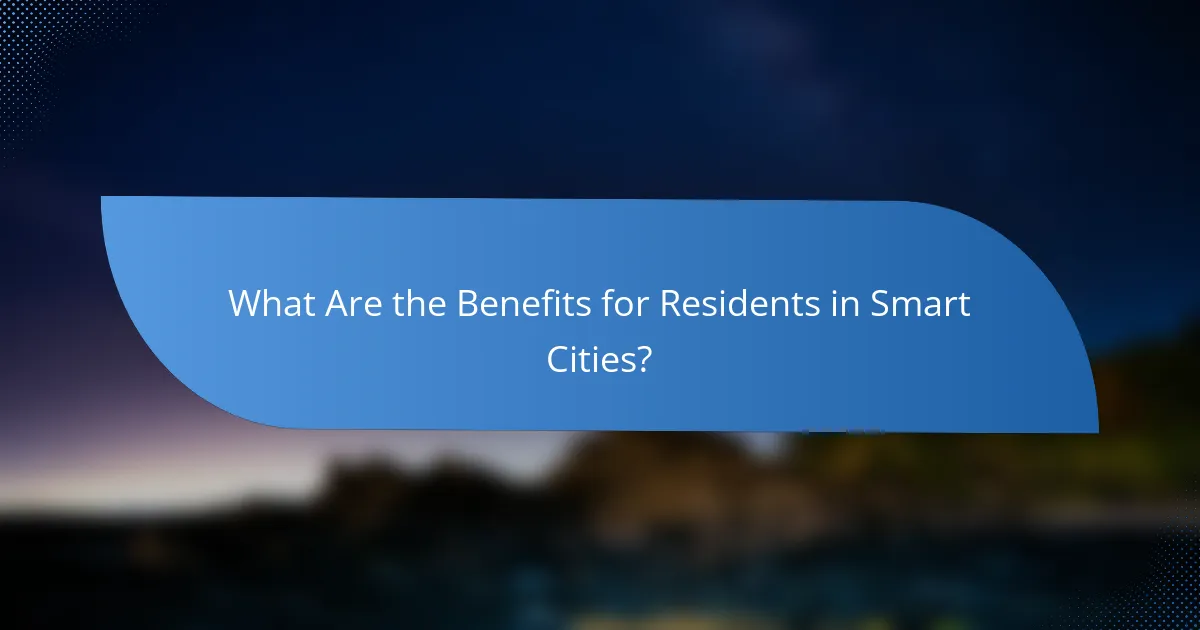
What Are the Benefits for Residents in Smart Cities?
Residents in smart cities experience numerous benefits from the integration of IoT devices, which enhance daily living through improved services, cost savings, and community interaction. These advantages contribute to a more efficient, connected, and healthier urban environment.
Increased Quality of Life
Smart cities leverage IoT technology to enhance the overall quality of life for residents. For instance, smart lighting systems adjust based on pedestrian movement, improving safety and convenience during nighttime hours.
Additionally, smart waste management systems optimize collection routes, reducing traffic congestion and keeping neighborhoods cleaner. These innovations lead to a more enjoyable living experience and foster a sense of community.
Cost Savings on Utilities
Residents can benefit from significant cost savings on utilities through smart meters and energy-efficient systems. These devices provide real-time data on energy consumption, allowing households to adjust usage patterns and reduce bills by up to 20%.
Moreover, smart water management systems can detect leaks and monitor usage, helping residents avoid unnecessary expenses. Participating in local energy-saving programs can further enhance these savings.
Enhanced Community Engagement
Smart cities promote enhanced community engagement by utilizing digital platforms for communication and feedback. Residents can easily access information about local events, public services, and community initiatives through mobile apps and websites.
Furthermore, IoT devices facilitate real-time reporting of issues, such as potholes or broken streetlights, allowing residents to actively participate in maintaining their neighborhoods. This fosters a stronger sense of belonging and civic responsibility.
Improved Health Services
Smart cities improve health services through the integration of telemedicine and health monitoring technologies. Residents can access healthcare professionals remotely, reducing wait times and increasing convenience.
Wearable health devices connected to city health systems can track vital signs and alert medical services in emergencies, ensuring timely interventions. This proactive approach to health management enhances overall public health and well-being.
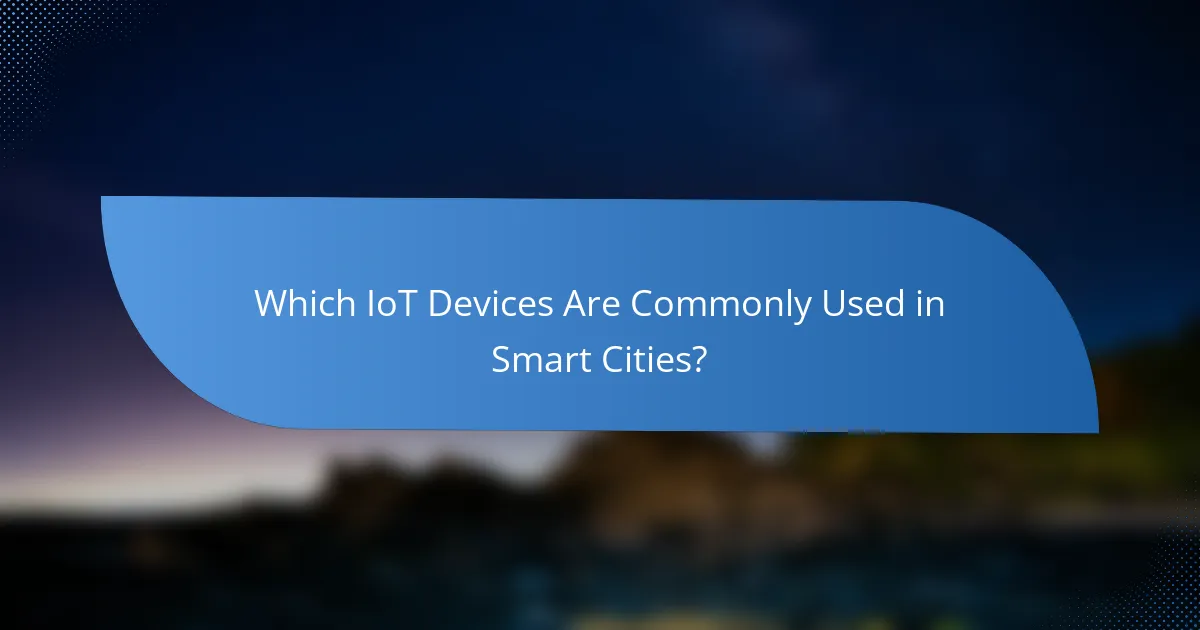
Which IoT Devices Are Commonly Used in Smart Cities?
Smart cities utilize a variety of IoT devices to enhance urban living, improve efficiency, and provide better services to residents. Common devices include smart meters, connected streetlights, environmental sensors, and smart waste bins, each serving unique functions that contribute to the overall smart city ecosystem.
Smart Meters
Smart meters are advanced devices that monitor and report energy, water, or gas usage in real-time. They provide consumers and utility companies with accurate data, enabling better energy management and cost savings. Residents can track their consumption patterns, leading to more informed decisions about usage and conservation.
These meters often communicate data wirelessly, reducing the need for manual readings and improving billing accuracy. In many regions, smart meters can help identify outages quickly, allowing for faster response times from utility providers.
Connected Streetlights
Connected streetlights are equipped with sensors and communication technology that allow for remote monitoring and control. They can adjust brightness based on ambient light conditions or pedestrian activity, which enhances safety and reduces energy consumption. This adaptability can lead to significant cost savings for municipalities.
Additionally, these streetlights can serve as hubs for other smart city applications, such as environmental monitoring or Wi-Fi hotspots, creating multifunctional urban infrastructure. Some cities have reported reductions in energy costs by up to 50% after implementing smart streetlight systems.
Environmental Sensors
Environmental sensors are deployed throughout smart cities to monitor air quality, noise levels, and other environmental factors. These devices collect data that can inform public health initiatives and urban planning efforts. For example, real-time air quality data can help residents avoid high pollution areas and enable authorities to take action when necessary.
These sensors can be integrated into existing infrastructure or installed as standalone units. The data they provide is crucial for creating healthier urban environments and can support compliance with environmental regulations.
Smart Waste Bins
Smart waste bins are equipped with sensors that monitor fill levels and optimize collection routes. This technology helps waste management services operate more efficiently, reducing unnecessary pickups and lowering operational costs. Residents benefit from cleaner streets and more timely waste collection.
Some smart bins can also sort recyclables automatically, promoting better waste management practices. By providing real-time data, these bins help cities manage waste more sustainably and improve overall urban cleanliness.

How Do Smart Cities Improve Sustainability?
Smart cities enhance sustainability by integrating Internet of Things (IoT) devices that optimize urban systems and reduce environmental impact. These technologies facilitate real-time data collection and analysis, leading to more efficient operations and resource use.
Reduction in Carbon Footprint
Smart cities significantly lower their carbon footprint through intelligent transportation systems and energy-efficient buildings. For instance, smart traffic lights can adjust their timing based on real-time traffic data, reducing idle time and emissions from vehicles.
Additionally, the use of renewable energy sources, such as solar panels integrated into smart grids, helps cities decrease reliance on fossil fuels. This shift can lead to reductions in greenhouse gas emissions by substantial percentages over time.
Efficient Resource Management
Efficient resource management in smart cities involves the use of IoT devices to monitor and control utilities like water and electricity. Smart meters provide real-time usage data, allowing residents and city officials to identify waste and optimize consumption patterns.
For example, smart irrigation systems can adjust watering schedules based on weather forecasts and soil moisture levels, conserving water while maintaining green spaces. This proactive approach not only saves resources but also reduces costs for both residents and municipalities.
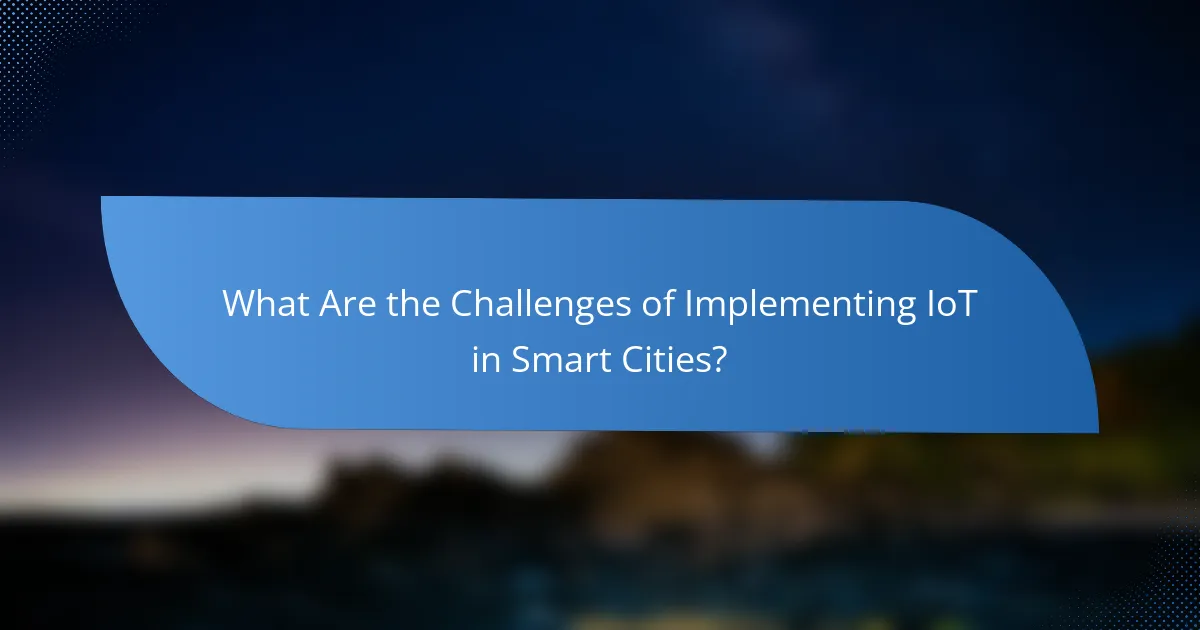
What Are the Challenges of Implementing IoT in Smart Cities?
Implementing IoT in smart cities presents several challenges, including data privacy concerns, high infrastructure costs, and interoperability issues among devices and systems. Addressing these challenges is crucial for the successful integration of IoT technologies into urban environments.
Data Privacy Concerns
Data privacy is a significant challenge when deploying IoT devices in smart cities. These devices often collect vast amounts of personal information, raising concerns about how this data is stored, used, and shared. Residents may fear unauthorized access or misuse of their data, leading to a lack of trust in smart city initiatives.
To mitigate these concerns, cities must implement robust data protection policies and transparent practices. This includes encryption of sensitive data, clear consent protocols, and regular audits to ensure compliance with privacy regulations, such as the General Data Protection Regulation (GDPR) in Europe.
Infrastructure Costs
The costs associated with building and maintaining the infrastructure for IoT in smart cities can be substantial. Expenses include the installation of sensors, communication networks, and data processing systems. Cities must carefully evaluate their budgets and prioritize investments to ensure long-term sustainability.
Public-private partnerships can help alleviate some financial burdens by sharing costs and resources. Additionally, cities should explore funding opportunities from government grants or international organizations aimed at promoting smart city development.
Interoperability Issues
Interoperability issues arise when different IoT devices and systems cannot communicate effectively with each other. This can lead to fragmented services and reduced efficiency in smart city operations. Standardizing protocols and ensuring compatibility among devices is essential for seamless integration.
To address interoperability challenges, cities should adopt widely accepted standards and frameworks. Engaging with industry stakeholders and technology providers can facilitate the development of solutions that promote compatibility and enhance the overall functionality of smart city systems.
